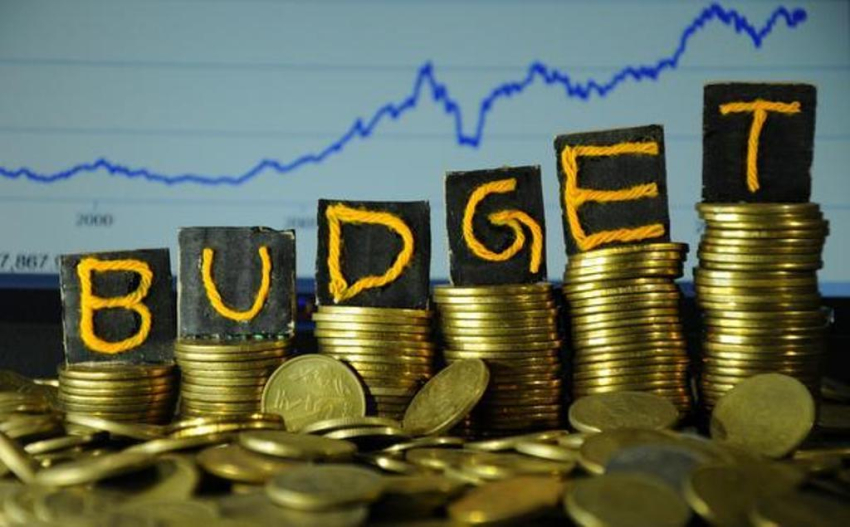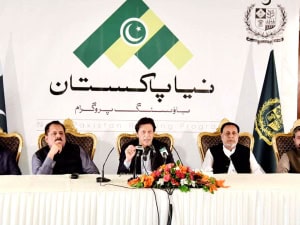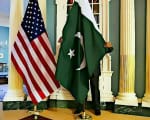Budget, as is usually stated, is not merely a statement of income and expenditure. It is not only a balance sheet. A budget at the federal level is meant to be a clear indicator of the direction in which the government wishes to take the country in the coming financial year, and ahead.
Going by these expectations, Pakistan’s Federal Budget 2017-18 announced by Finance Minister Ishaq Dar on May 26, is disappointing. Utterly.
Firstly, the supplementary grant of more than 300 billion rupees demanded in 2016-17 by the finance ministry speaks volumes about faulty and non-serious budgetary exercises.
Let us now start with how the budget for 2017-18 was prepared before being announced. At federal government level, a Budget Strategy Paper is usually prepared, shared with and then approved by the Cabinet, earlier in the year. This time around, the Paper was unfolded in May, and rushed through with the formalities of approval by the Cabinet. And now the minister once again is talking about a national consensus on economic agenda, the ‘Charter of Economy.’ And post presentation on May 26th, the parliament has to wind up the entire debate on it in less than three weeks’ time, by June 16. Too hasty.
It was no surprise that during his budget speech, the finance minister was so desperately trying to build opinion in favor of loans, if the same is acquired for developmental purposes. The fact of the matter is that during the past four years of the tenure of this government, a total burden of around 7.5 trillion rupees has been added in the form of new debts, forcing the finance minister’s team to come up with new terminology, i.e., gross debt and net debt. Deducting around 2 trillion rupees of government’s reserves with the banks from gross debt, we arrive at a whopping figure of Rs. 18893 billion – the ‘net debt.’ Phenomenal and frightening, by all means.
The total size of the budget (expenditure) 2017-18 is Rs. 4753 billion, which is 8% higher than the ongoing year’s. With debt burden explained above in view, it is not hard to understand that why a staggering amount of Rs. 1363 billion is set aside in the budget 2017-18 only for repayment of interest on the debt. Repayment of actual foreign loans would cost Rs. 287 billion, separately. Add Rs. 920 billion for defence spending and these two amounts, 2570 billion put together, are eating up considerably more than half, 54% to be exact, of the total expenditure. Only the remaining 46% is left in the hand of economic managers to run the entire governance structure, to pay salaries and pensions, and to move ahead with developmental plans. No wonders, the habitual tendency of thriving on loans has its consequences.
Where will the money come from? Expectation is that Federal Bureau of Revenue (FBR) will be generating Rs. 4013 billion, as it is falling short by Rs. 100 billion in collecting the target for the outgoing year (Rs. 3521 is the revised estimate, which in itself may not be achieved by June 30). For the fiscal year 2016-17, the target for direct taxes was Rs. 1558 billion while collection was of Rs. 1389 billion – less by 8 %. The target for indirect taxes was Rs. 2063 billion while the collection came to 2142 billion, 3.3% more than the target. Now for 2017-18, the target for direct taxes has been increased by 214 bn. (to 1595 bn.) while the target for indirect taxes is being increased by 276 bn. (to 2418 bn.) This is all set to increase the burden of the common man, which is already unbearable for some underprivileged segments of the society.
The ‘Development Budget’ is becoming a mystery. The size of federal Public Sector Development Program (PSDP) has been increased to Rs. 1001 billion from the ongoing fiscal year’s 800 billion (budget estimates.) The bulk of this (over 400 bn.) remains concentrated in the communication projects – a good showcasing just before the elections. However, there are some critical questions on the overall development spending. Revised estimates for 2016-17 indicate not only the overall spending is considerably less than the initial allocation (Rs. 715 bn. as against Rs. 800 bn. – less than the revised estimates for the Bank Borrowing of Rs. 741 billion in the same year), but no expense has been mentioned against allocation for IDPs that was Rs. 100 billion. An expenditure of Rs. 14 billion is shown against a new heading – Security Enhancement – and Rs. 45 billion are provided for this head and IDPs each, again. Expenditure on SDGs increased to Rs. 42.5 bn. from an allocation of Rs. 20 billion.
No amount was spent in the outgoing fiscal year out of Rs. 28 billion allocated for Special Federal Development Program, yet, Rs, 40 billion are being provided for the same for 2017-18, again. Two new initiatives – ‘Energy for All’ and ‘Clean Drinking Water for All’ get Rs. 12.5 billion each, without any details. Prime Minister’s Youth Initiative could consume only a quarter – Rs. 5 billion out of Rs. 20 billion, and the same amount of Rs. 20 billion is allocated for the next year again. Discretionary expenses with no details. Electioneering mood and campaign stunts, very clearly.
Much of the allocations for Ministry of Ports and Shipping and Ministry of Planning, Development and Reform – the latter being run by Minister Ahsan Iqbal who seems to be one of the most ‘busy’ members of the cabinet – remain unspent while those for WAPDA and Railways and also for NHA increased substantially. These figures and records of past few years indicate that some of the allocations have actually been used as a cushion for the economic managers to adjust the overall governmental expenditure – as the need may be – instead of being based on thoughtful development planning.
Defence Budget is increased from Rs. 860 bn. for 2016-17 to Rs. 920 bn. for 2017-18: this is only a modest increase of 7% considering the overall security situation in the region – continuous tension on the eastern border and periodic tense periods on the western.
Finance minister’s budget speech erroneously mentions that the country faces a shortfall of some one million housing units, which actually is ten million units, and the shortfall increases by some 300,000 housing units every year. However, despite this mammoth need being highlighted, an allocation of mere Rs. 6 billion and that too in the form of a part of credit guarantees is insufficient. What is needed is a large-scale program for the provision of housing to millions who lack it.
Cement and steel would now cost dearer, from July 1, 2017 – what to talk about a house of one’s own. Taxable income has been kept the same; no respite.
The most serious issues that the country’s economy is faced with are on the external front. The budget, however, does not come up with any meaningful measures to boost exports, and to contain current account deficit. Increase in salaries and pensions, doubly so for the military personnel, and continuing with huge allocations for Benazir Income Support Program (BISP) – Rs. 121 billion this year for 55 million beneficiaries – are beyond doubt aimed at winning sympathies before the next general elections. Other tax measures are by and large cosmetic.
How much the PML-N can capitalize on these ventures? Only time will tell.















